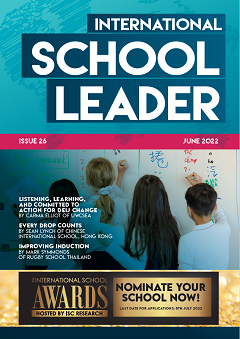By Anthony Copeland
Take a moment to imagine a school focused on sustainability. What does it look like? What are the students doing?
You might have imagined upcycled fashion, growing food and recycling plastics. You might have imagined awareness campaigns, low-energy days or a meat-free cafeteria. What you might not have imagined are computer simulations, programming or electronics. Why?
Supporting sustainability through technology
A move towards sustainability is often seen as a move back to an idealised grassroots community and a move away from our reliance on technology. But the past alone can’t save us, and many technological innovations are going to be required to bring about the changes we need. For example, it’s both a reduction in traffic and affordable electric vehicles that will lower transport emissions. It’s both the rise in consumer awareness and the availability of innovative meat alternatives that will allow us to reduce overall meat consumption. It’s a move away from non-renewable energies and realistic renewable alternatives that will reduce our carbon footprint. A sustainable future is going to take both changes in behaviour and the creation of new technologies. This is why an authentic commitment to education for sustainable development is also a commitment to STEM education.
I’d spent four years working as a technology integrator for STEM education at a school-based makerspace before I joined Fairgreen International School in Dubai’s first net-zero energy community. I arrived wondering how my experience in STEM and technology integration would support the school’s ethos. There were already so many sustainable initiatives including an urban farming club, recycling drives and an annual solar energy competition hosted by the Million Solar Stars organisation. Rather than bring in something entirely new, I was curious to see how existing projects could be enhanced and the Million Solar Stars competition seemed as good a place to start as any.
Introducing Project Sunflower
The competition already had students designing and racing solar-powered boats and cars and it was great to see so much evidence of design thinking in previous competitions. Project Sunflower was designed to extend learning opportunities into electronics, programming and data analysis. The project runs alongside our grade 8 science unit on electricity and starts by introducing students to the Arduino ecosystem. Students first learn to build circuits on breadboards before they learn to write basic computer programs that run motors, switch on LEDs, and read temperature and light sensors. The culmination of this project is that students are challenged with creating a solar panel that tracks the sun throughout the day (If you’ve ever seen a timelapse video of a field of sunflowers tracking the sun as it moves across the sky, you’ll understand why it was named Project Sunflower!).
The Arduino is a small programmable circuit board that can be used to prototype electronic machines. The major advantage of the board is that it is open-source and inexpensive, and has a thriving community of makers who are continuously sharing project ideas and offering support.
One of the key benefits of Project Sunflower was how low the threshold was. As soon as students knew how to write a programme that says, ‘If you measure X, do Y’, then they were ready to programme an Arduino to follow the sun! That being said, STEM projects can also become as deeply technical and challenging as you like and it was great to see students motivated to push their projects to greater levels of complexity. Because there was an added sense of competition for which team could harvest the most energy and an overall sense of purpose and social responsibility, students were really motivated to improve their designs.
The challenge to find out which solar panels could capture the most energy was an opportunity for grade 10 students to practise their data analysis skills. This involves using some extra components to record thousands of measurements taken across the day. The challenge is incorporated into a science unit we created called ‘Computational Science’, which introduces students to using spreadsheets and Python programming to explore large volumes of scientific data.
The key takeaway throughout all of this is that a move towards sustainability should also be a move to supercharge your STEM projects. It is inspiring how well the two together can build authentic and academically rigorous projects, and we are excited to see how far we can take this.
Six tips for STEMifying your sustainability
- Reassure teachers that it’s okay if they aren’t the experts in the room. Learning new technologies like Arduino electronics or programming can be done with students. There are countless websites and YouTube videos to support you and it gives you an invaluable opportunity to model troubleshooting to the class.
- Utilise the growing number of STEM competitions focusing on sustainable solutions. These competitions offer a framework to get you started and a sense of competition further motivates students.
- Technology doesn’t have to be expensive. We chose Arduino because it’s open-source and many components can be found cheaply. Other than that our only other material was second-hand cardboard and wood. For programming initiatives, the entry cost can be completely free!
- Start small. When you don’t yet know what you need to know it’s amazing how quickly a project idea can become unmanageable. We chose solar trackers because we knew that we only had to incorporate motors and light sensors into our design. It wasn’t until a year later that we started collecting data for the grade 10 data analysis project.
- Look at what is already there first. Schools are busy places and new projects can be difficult to get off the ground. Project Sunflower was straightforward because it built off events and competitions that were already in place.
- Don’t just support the change, lead the change. Thankfully, Fairgreen International School was already supporting the Million Solar Stars event so the time away from traditional lessons was already scheduled. For projects like these to get off the ground, teachers need to see that the projects will temporarily substitute their exhibiting work and not add to it.

Anthony Copeland is the Middle School Curriculum Coordinator at Fairgreen International School in Dubai. You can connect with him on LinkedIn and on Twitter @antcopeland.
Subscribe to International School Leader Magazine for more!


